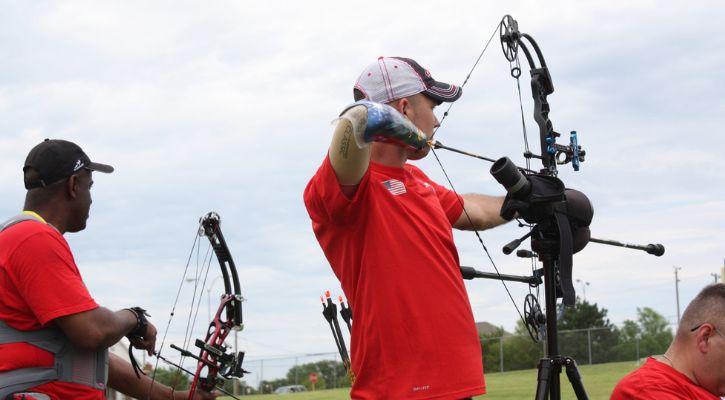
Archery
About
Archery is a versatile activity. It is something that can be done for fun, for hunting, or for competition. “Target shooting wasn’t a thing for me,” said US Para Archery Head Coach Jonathan Clemins. “But I realized I enjoyed shooting my bow as much as I enjoyed hunting.”
In addition, archery can be a year-round sport. Although most people think of it as an outdoor activity, indoor archery ranges extend the opportunity to shoot a bow when weather becomes an issue. “Archery doesn’t have an off-season,” said 3X Paralympian and Silver Medalist Matt Stutzman, who is known as the Armless Archer. “It doesn’t slow down. You could shoot a tournament every month.”
Furthermore, it is an inclusive sport that you can do alongside other adaptive athletes as well as able-bodied athletes. “It is exactly the same sport … you just may need adaptive equipment to assist you.”
Finally, it is one of those sports that you can do at any point in your life. “It is not an age specific sport,” said Army Veteran and 2X Paralympian Lia Coryell. She competed in her first Paralympic Games at the age of 51.
Equipment
Click here for a list of archery suppliers.
Classification and Competition
Classification provides a structure for para competition. The classification system is designed to determine eligibility and group athletes according to their impairment to create a level playing field. Classifiers go through extensive training and are certified by World Archery to carefully determine whether athletes qualify for para competition. Classification can be either national or international.
Rules
Records
Learn More
Resources
- Resource Brochure for Clubs and Coaches
- Resource Brochure for Athletes and Parents
- Become a Coach
- Find a Coach
- Find a Club
- Become a Judge
- Find a Judge
- Athlete Development Model
- Achievement Award Programs
- Find an Event
- Veteran Grant Programs
- Para United States Archery Team Selection Procedures
- Paralympic Games Selection Procedures
Programs Near You
Ready to try adaptive archery? Click here to find a location near you!


